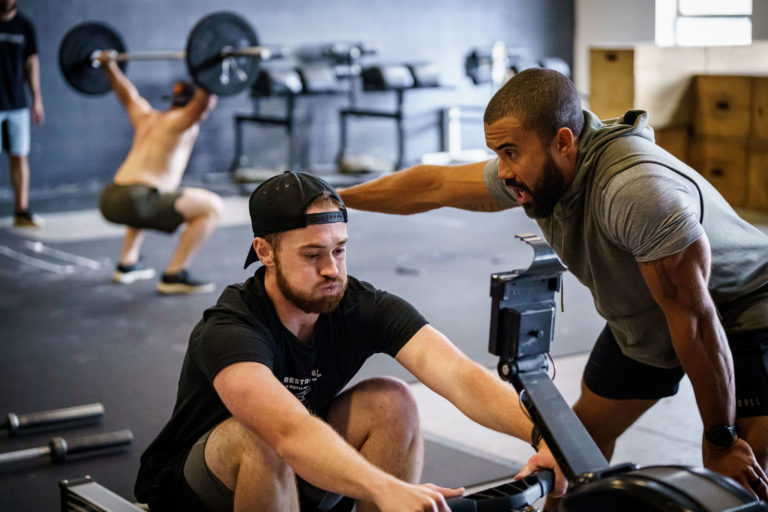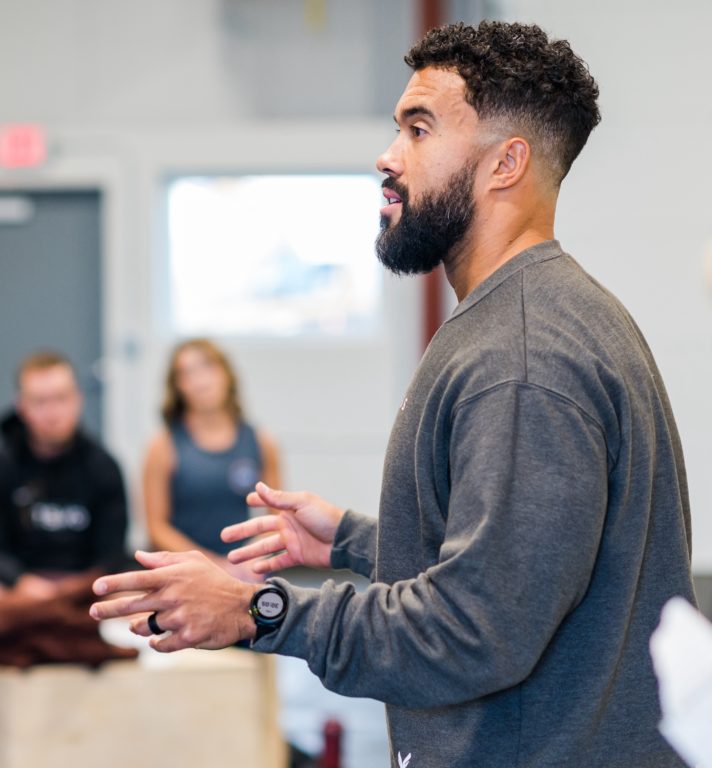Question: Why don’t we ever do Zone 2 work in CrossFit classes?
Training in specific zones can be beneficial for building a broad fitness for varying energy system demands. Typically, training in “zones” refers to one’s heart rate while training relative to their projected or calculated max heart rate. The zones commonly range from Zone 1, a resting zone (55-65% of max heart rate), to Zone 5 (90% max HR and above), which is maximal anaerobic output. Zone 2 (65-75% max HR) training is all the rage these days in training circles, and it’s not without its merits.
Zone 2 training can help develop a broader base of aerobic capacity, burn fat, and increase one’s recoverability from high-intensity training. To reap the benefits of Zone 2 training, however, one must spend a particular amount of time in this zone. There’s always a debate about the length of time and whether it needs to be in one session or if an accumulated amount of time throughout a week can create positive adaptations for an athlete. But we do know that “time” must be accumulated to reap these benefits. With that being the most limited resource for many people, we consider what would be lost if you spent excess time doing Zone 2 training at your CrossFit affiliate.

In CrossFit, we meticulously balance our methods within the traditional 60-minute time window to provide comprehensive instruction, a warm-up, a workout, and a cool-down. Our methodology — constantly varied functional movements executed at high intensity — is designed to provide athletes with the most effective use of their time.
When we program CrossFit workouts, we aim to develop all three primary energy pathways. The phosphocreatine/phosphagen system (short/high power), the lactate/glycolytic system (medium/moderate power), and the oxidative/aerobic system (long/low power) are blended and developed in our approach simultaneously. We do not discourage the development of the Zone 2 pathway, but when it comes to providing the best experience possible for our athletes, we strive to find a balanced approach to developing all 10 general physical skills. This means we must consider cardiorespiratory endurance, strength, stamina, flexibility, power, speed, balance, coordination, agility, and accuracy. When we consider the breadth of our focus, it rarely allows us to simply do Zone 2 cyclical-based erg work. To do our job well as programmers or coaches, we must understand that not all members come daily. Considering each member’s needs, it is often challenging to set aside one or two training days as low or moderate intensity for the entire gym when they are all on different training schedules.
While Zone 2 training has its benefits and can enhance any client’s fitness, it is a small part of our daily programming. When CrossFit is programmed well, it stands as the best prescription for those looking to increase their general fitness. By sticking to our methodology of constantly varied functional movements executed at high intensities, we ensure our members continue to develop their fitness in time domains that go even further than the commonly programmed 10- to 25-minute working time window. This comprehensive approach to fitness development is a testament to the effectiveness of CrossFit programming.
How could this be applied?
All that said, for those who desire Zone 2 training, several potential solutions could be explored on the side of the affiliate and the individual.
Affiliates:
- Could offer an area to members where the focus is simply zone-based development on ergs.
- Might program a run, row, bike, or ski option at moderate intensity or conversational-paced speeds one day per week.
- Offer a Zone 2 session as a way to get members outside the gym and run, ruck, or ride together twice a week.
Athletes:
- Could build Zone 2 training into their week by blocking out time for two 30- to 90-minute sessions outside the gym.
- Might start a Zone 2 training group that meets every Saturday morning for a run, ruck, ride, and post-workout coffee.
- Pick a day each week when the workout has less volume and invite workout buddies to do a Zone 2 session immediately following the WOD on the rower, bike, or ski erg.
By combining Zone 2 sessions with opportunities to connect in new ways with your CrossFit affiliate community, you get even more bang for your buck.
There’s no doubt Zone 2 training is effective, especially for those with endurance goals measured on trails, roads, pools, and mountains outside of their affiliate. However, being clear on your goals is essential because, without a clear intention, you can end up racking up junk miles just because you heard someone say you “should” be doing Zone 2 training. Apply the same rigor and attention to Zone 2 training you experience at your CrossFit affiliate, and as you do at the whiteboard — always track your results.
Have a question for a coach? Please submit that here.
About the Author
 Adrian Conway (CF-L3) found CrossFit in 2011 and has since managed an affiliate, been part owner of an affiliate, competed at the CrossFit Games five times as an individual, on a team, and as a masters athlete, and has coached athletes to qualify and participate in the CrossFit Games. Adrian has been a member of the CrossFit Seminar Staff since 2013. He spends most of his time now coaching clients remotely and providing programming to affiliates through TRU (Train to Rise Up). He loves being involved with the sport and the methodology through our podcast channels and commentating at the CrossFit Games.
Adrian Conway (CF-L3) found CrossFit in 2011 and has since managed an affiliate, been part owner of an affiliate, competed at the CrossFit Games five times as an individual, on a team, and as a masters athlete, and has coached athletes to qualify and participate in the CrossFit Games. Adrian has been a member of the CrossFit Seminar Staff since 2013. He spends most of his time now coaching clients remotely and providing programming to affiliates through TRU (Train to Rise Up). He loves being involved with the sport and the methodology through our podcast channels and commentating at the CrossFit Games.
Ask a Coach: Why Don't We Ever Do Zone 2 Work in CrossFit Classes?